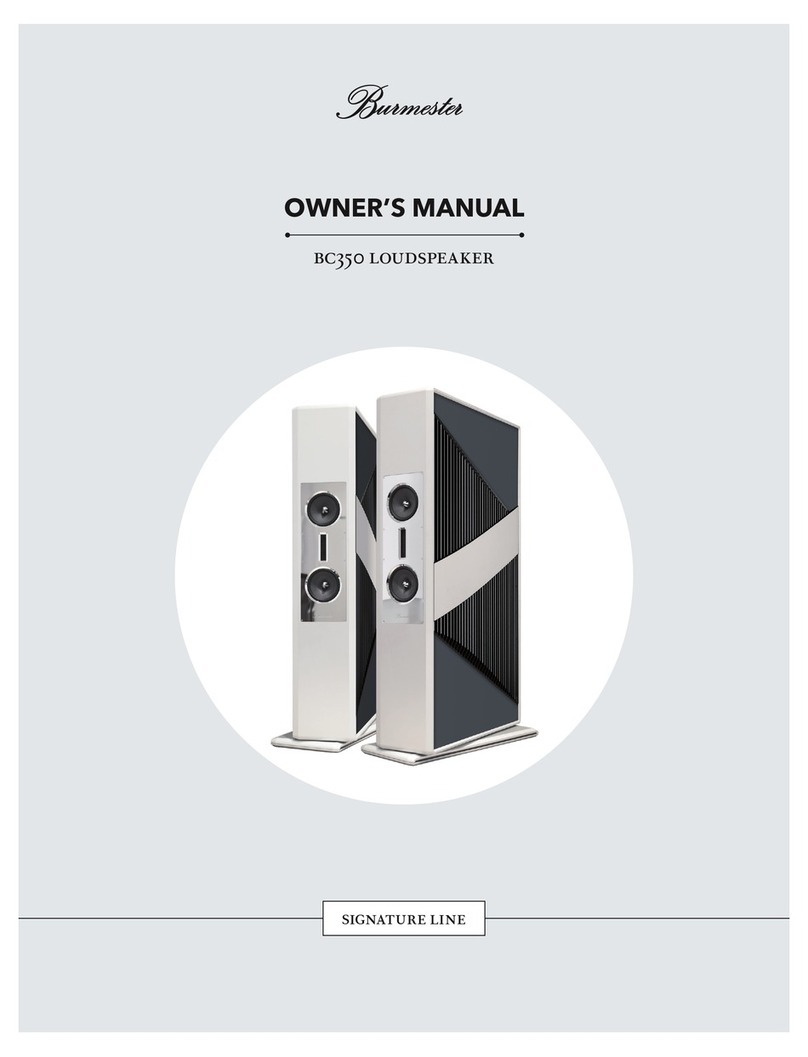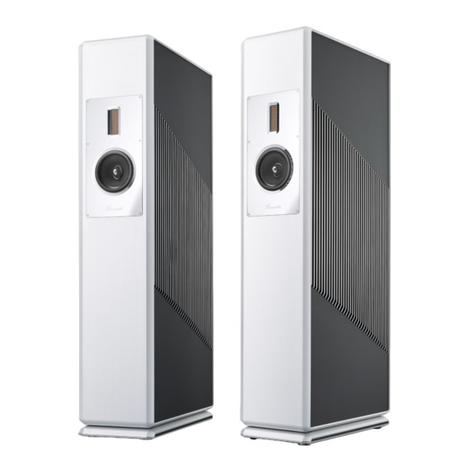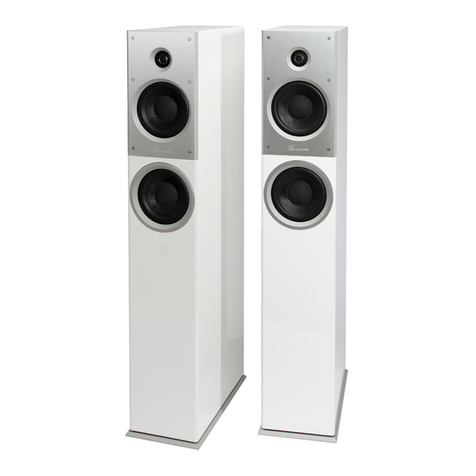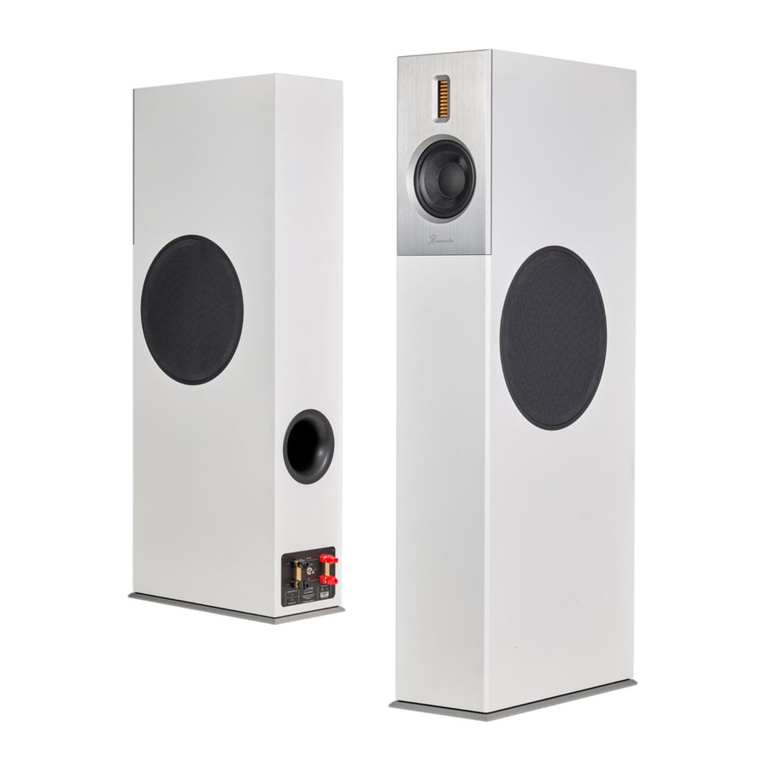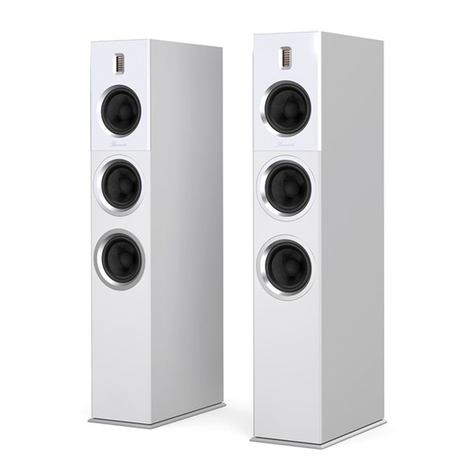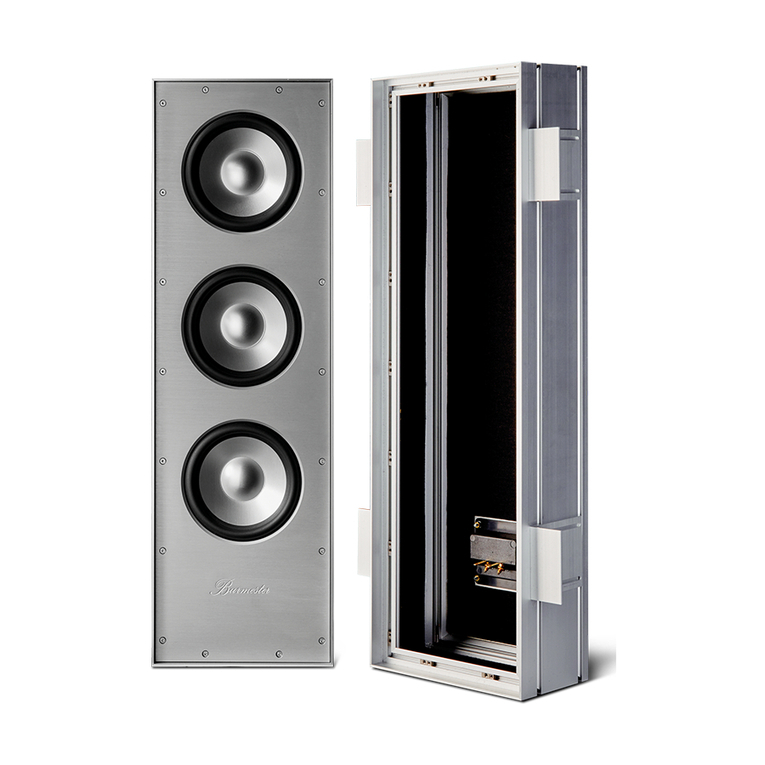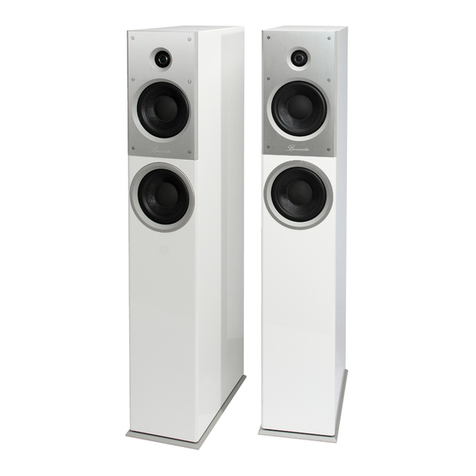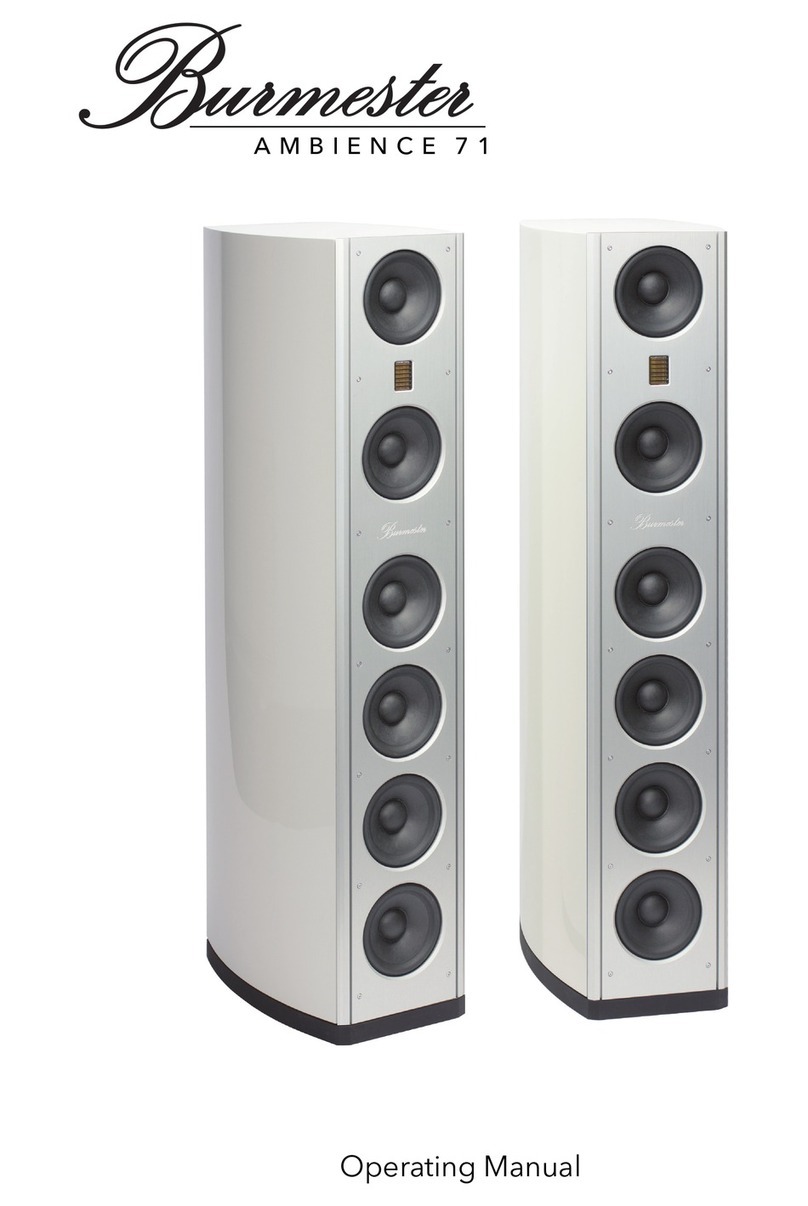
3
SETTING UP
Set-up position Carefully remove the loudspeakers from the packing cartons and set them up in an
appropriate location. Avoid direct sunligth, dust and humidity to the loudspeakers by
choosing the final placement. The loudspeakers can easily be integrated into any living
environment. The sound will be best if the speakers form an equilateral triangle with the
listening position when seen from above.
Ideal listening position
The bass-speakers (behind the slit side panel) should point here to the center, which
amounts to distance of the loudspeakers to each other approx. 2.5 m to 3.5 m (98.4 inches
to 137.8 inches), and the area between the loudspeakers should remain as free as possible,
in order to feast early, sound-falsifying reflections.
To the distance to the space walls in the proximity of the loudspeakers it applies that the
spatial illustration with increasing distance to the wall increases and the bass rendition tauter
and more outlined becomes. The loudspeakers B 100 are in such a way conceived that they
do not require a bass rise through wind near list! They should be set up thus as freely as
possible. It applies to keep a minimum distance from 0.7 m (27.6 inches) to the lateral and
0.5 m (19.7 inches) to the rear wall, in order to achieve a good sound balance. The more
largely the distances to be selected, the more airily, more highly detailed and more balanced
the sound, since the room acoustics less influence on the sound takes. If one attaches
importance to a pronounced deep representation, then the distance to the rear wall of the
area should be largely selected according to, so that reflections of the area come as late as
possible and do not affect the locatableness of the sound negatively.
For the perfect "sweet spot" for listening, the crossover of the loudspeaker radiation behind
the listener is recommended. That means, the loudspeakers are in-bent so far to the hearing
place, until the focus and the symmetry of the space illustration stand to each other in a
good relationship. Starting from a certain point one loses however the focus of the
illustration, here is in demand a compromise of individual hearing. One can determine the
optimal focus very well with a mono admission or a newscaster. The loudspeaker thereby
gradually (inch by inch) pre and pushed back to the sound presentation of both transducers
from the center comes on the whole. If this is the case, then the loudspeaker degree by
degree is turned, until the sound takes only a minimum area.
Experiences show that the loudspeakers should be in-bent so far inward, until one can see
straight still the lateral slots of the loudspeakers. If one wants to hear with several listeners,
then a crossover of both loudspeakers before the listeners is recommended. Here it applies
to find with easy experimenting, the optimal personal taste of the presentation.
